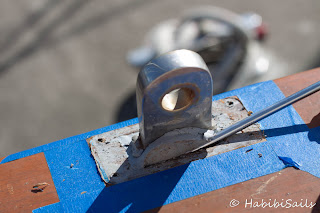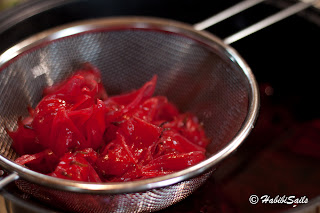Exactly 365 days ago we untied the dock lines in Rock Hall MD and started our cruising adventure on Habibi - with mixed feelings. We left behind so much but even more was waiting for us out there!
Just for the fun of it, let's put it into some numbers:
So far we cruised the distance of 4'500 nautical miles (around 8'300km).
We stopped at around 70 different anchorages or marinas in 10 different countries.
We ran aground 3 times but managed to set us free either with the engine or while waiting for the tide to rise...
We saw winds from almost 0 up to 50 knots and seas as high as 15 feet (5m).
The water temperature climbed from freezing 12.5C up to pleasant 31C.
We published around 135 blog posts and 1'245 pictures on facebook.
And the most amazing number: Marco and I never have been separated more than a couple of hours during the past 365 days!
We've met countless people on the way - amazing, surprising, awkward, generous, odd, open minded, stingy, spontaneous, lazy, chatty, wonderful people. Some of this encounter led into friendship, others did not. But all in all - if there is any kind of emergency (and be it running out of booze) we experienced the cruising folks as very helpful.
As we've already pointed out in various posts cruising life isn't always as sweet as it appears to be and there have been times when we were more then ready to sell Habibi right away! But cruiser's must all suffer from amnesia ;-)
Our minds (and camera's chip) are filled with all the beautiful places we've been able to visit. The reason we stayed in Grenada so long was on one hand Hurricane season and on the other hand some work that had to be done on Habibi. Now the next season is waiting for us and we are READY! Ready to be sailing again, to explore new places and revisit places we've liked. Ready to meet old and new friends. Ready to fish, relax, enjoy - maybe even sipping on a cocktail while watching the sunset on the beach...
Stay tuned for new adventures on Habibi!
With love from paradise
Marco & Rahel
















































